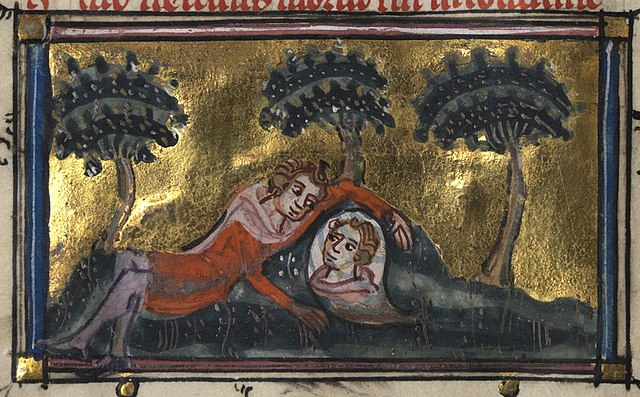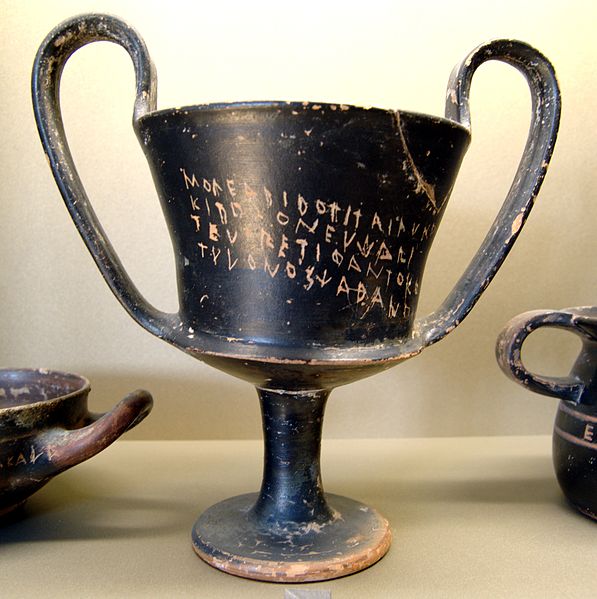In Greek mythology, Narcissus was a hunter from Thespiae in Boeotia who was known for his beauty which was noticed by all, regardless of gender. According to the best known version of the story, by Ovid, Narcissus rejected all advances, eventually falling in love with a reflection in a pool of water, tragically not realizing its similarity, entranced by it. In some versions, he beat his breast purple in agony at being kept apart from this reflected love, and in his place sprouted a flower bearing his name.
Narcissus, fresco from Pompeii
Narcissus at the Spring by Jan Roos depicts Narcissus gazing at his own reflection.
Narcissus gazes at the spring. From a 14th Century copy of Roman de la Rose.
Narcissus by Gyula Benczúr
Thespiae was an ancient Greek city (polis) in Boeotia. It stood on level ground commanded by the low range of hills which run eastward from the foot of Mount Helicon to Thebes, near modern Thespies.
Silver Obol from Thespiae, 431-424 BCE. Obverse: Boeotian shield. Reverse: crescent, ΘΕΣ[ΠΙΕΩΝ] (of the Thespians).
The Venus of Arles, modeled after the Aphrodite of Thespiae by Praxiteles
A kantharos from Thespiae (450–425 BC) inscribed in the Boeotian alphabet





![Silver Obol from Thespiae, 431-424 BCE. Obverse: Boeotian shield. Reverse: crescent, ΘΕΣ[ΠΙΕΩΝ] (of the Thespians).](https://upload.wikimedia.org/wikipedia/commons/thumb/c/c5/Thespiae_431-424_BC.jpg/640px-Thespiae_431-424_BC.jpg)

